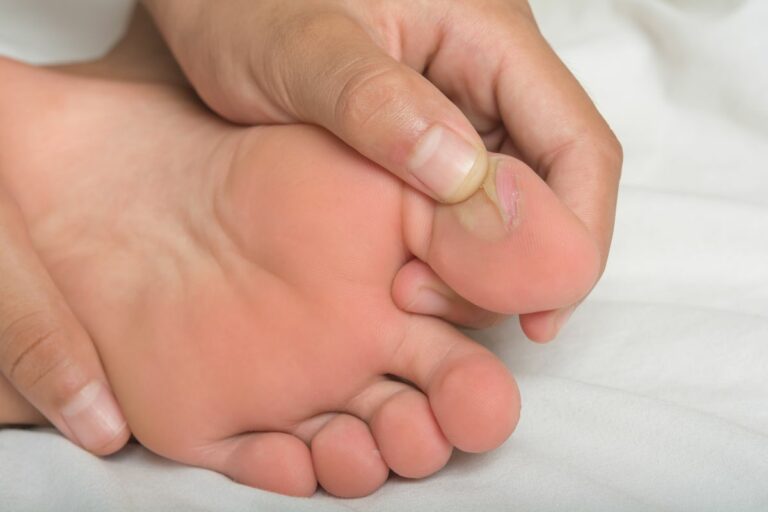The Pros And Cons of Running After Leg Day

Leg day can leave even the strongest of athletes feeling sore and exhausted.
That’s why a lot of people wonder whether running after leg day is a good idea. After all, you need to give your muscles time to recover, right?
Well, yes and no. While there can be both advantages and disadvantages to running straight after leg day, low-intensity or even moderate-intensity runs are generally considered to be okay after training legs.
With that being said, there are some factors you’ll need to consider before running after leg day.
It’s important to take your individual training program, physical limitations, and goals into account to determine how much running and at what intensity after leg day is appropriate for you.
Here’s everything you need to know about running after leg day, including the pros and cons and tips for a successful post-leg day run.
Why Running After Leg Day Is A Good Idea
Many people who train legs with the goal of building muscle strength and mass automatically assume that running after leg day is a no-go.
That’s because, as every strength training athlete knows, rest and recovery is very important, since your muscle fibers need to repair in order to grow.
With that being said, just because running is an exercise that primarily involves the legs doesn’t mean it will hinder your muscle recovery. Here’s why:
1. Muscle Fibers
Running at low to moderate intensity does not use the same muscle fibers as resistance exercises do.
When you complete a set of heavy squats, for example, your type II muscle fibers (also known as fast-twitch fibers) are the ones being activated.
These muscle fibers are also activated with high-intensity sprinting.
On the other hand, when you run at a slow or moderate pace, your type I (slow-twitch) muscle fibers are activated.
While these muscle fibers don’t provide the kind of power you need to rep 350 lbs on the leg press, they don’t get tired as easily.
So, if you’re worried that your muscle fibers won’t get a chance to repair themselves if you run after leg day, don’t be.
Different muscle fibers will be activated as long as you don’t run too fast.
2. Lactate Clearance
Additionally, there’s evidence to suggest that engaging in low-intensity muscular exercise (which includes jogging) can help your body to clear lactate after weightlifting.
The faster your body is able to complete the lactate clearance process, the less likely you are to develop DOMS (delayed onset muscle soreness).
Delayed onset muscle soreness can really hinder your ability to train effectively because your muscles will feel stiff, sore, and tired.
Since jogging can help to prevent this, it could actually be a great idea to do some low-intensity running after leg day.
3. Increased Blood Flow
Although it’s definitely true that you should allow your muscles to rest after a heavy leg day, there’s a line between allowing for repair and being totally sedentary.
A lot of people think that taking a rest day means just sitting around and doing nothing, but this could hinder your muscle recovery rather than help it.
In order to repair and grow, your muscles need a good amount of blood flow. Jogging, or running at low to moderate intensity.
Can promote blood flow around your leg muscles, and this can speed up your recovery and prevent delayed onset muscle soreness.
4. Discipline
Is running after leg day going to be a fun and pain-free experience? Probably not.
Realistically, most of us are tired and sore after leg day, and the last thing you’re likely to feel like doing is going for a run.
However, while listening to your body is important when training, it’s also important to cultivate discipline and mental toughness.
Achieving your goals in strength training and/or cardio is going to involve pushing through a certain amount of discomfort.
Doing some light running after leg day is the perfect way to practice this.
Potential Risks Of Running After Leg Day

Although most people should not experience adverse effects when running after leg day, provided that running is kept between low and moderate intensity, there are some risks you should bear in mind. These include:
1. Overtraining
We’d like to preface this by saying that most people, especially people at the beginning of their fitness journeys, won’t be at risk of overtraining if they run after leg day.
Overtraining in the true sense is not easy to do. It’s much more likely to happen when you’re training very seriously and constantly trying to hit PBs and push your limits.
Even athletes training at intermediate level will probably not be at risk of overtraining as long as they don’t push the intensity of the running too far.
With that being said, it can be easy to overestimate what ‘moderate intensity’ actually means, and this can lead to accidentally training too hard.
When this happens, you can end up hindering your recovery and depriving your muscles of the rest and repair they need after leg day.
2. Injuries
If you do end up overtraining your leg muscles, you could put yourself at risk of injuries.
Pulled muscles and soft tissue injuries, for example, are very painful and impact your ability to train consistently at the level you would like to.
This is why it’s so important to get to grips with the difference between moderate and high-intensity exercise so that you don’t push your body harder than you should after leg day.
How To Run Successfully After Leg Day
If you want or need to run after leg day, the good news is that there are plenty of ways you can adjust your workout schedule and diet to ensure successful, injury-free exercise.
Here are some of our top tips for running after leg day without incurring any injuries or slowing down your recovery:
1. Stretch Before And After
It’s easy to forget to stretch when you’re busy jumping from one form of training to another throughout the day or week.
However, stretching is the most effective way to ensure that your muscles don’t get overly strained when running after leg day.
We recommend stretching before and after your strength training session. Stretching after leg day will help to prevent your muscles from getting sore and tight, which sets you up for a less painful run afterward.
Then, once you’re done running, you should ideally stretch again.
You’re much less likely to get injuries from overuse if you’re stretching before and after exercise, including between strength training and running.
2. Maintain Glycogen Stores
If one of your goals in strength training and running is to lose body fat, you may have been told that you need to cut down your carb intake.
This is common advice based on the fact that your body is less likely to burn fat if it has glycogen (its primary source of energy) to burn instead.
While this advice is based on scientific fact, it’s important to remember that you will probably not be able to perform at your best if your body is relying on burning fat for energy.
Athletic performance tends to be superior when your body is able to burn glycogen stores from glucose.
If you’re planning to do a hard leg day followed by a moderate intensity run, the best thing you can do is replace your glycogen stores after training legs.
This will mean you have enough energy to run well after training.
Whether performing well or burning fat is more important to you is going to depend on your individual goals.
Are you running after leg day because you want your body to burn fat for weight loss purposes? In that case, maybe cutting down on carbs is a good idea.
However, if you’re running alongside your strength training because you’ve signed up for a marathon, it’s important to give your body the fuel it needs to perform at its best.
That will involve eating enough carbohydrates.
3. Adjust Your Workouts
If strength training has been your priority for a long time, and you’ve only recently started running, the idea of lowering the intensity of your leg day can be frustrating.
However, if you really want to be able to give it your all when you run, you might have to adjust how much weight you lift, or how many sets and reps you do, to give your leg muscles the best possible chance of performing optimally during your run.
Again, this will come down to your priorities.
If you’ve just started running casually alongside strength training because you’d like to work on your cardio, you may not need to make any significant changes to your leg day routine.
That said, if you’re training for a marathon, you will need to dedicate a lot of time and energy to consistently improving your speed and endurance.
That means making sure you can perform at your best every time you run, and that’s not likely to happen if you’re running right after an intense leg day.
In the latter situation, you might need to take your squat weight down from 75% of your maximum to about 65%.
You may also need to cut down on some of the accessory exercises you do alongside the more intense exercises.
Alternatively, you could cut out heavy squats and leg press in favor of these accessory exercises so that you’re still building strength and endurance in your legs without exhausting your muscles.
Frequently Asked Questions
What Counts As A Hard Leg Day?
In general, if you’re training legs at 75% of your maximum weight or above, you can consider this a hard leg day.
With that being said, everyone’s tolerance is different, so you should base the answer to this on how you personally feel during and after your workouts.
Can I Run If My Muscles Are Sore?
It might not be pleasant, but you can still run with sore leg muscles.
Just make sure to stretch before and after and keep the intensity low to moderate rather than high.
Is Leg Day More Important Than Running?
This depends on your personal priorities. Are you training for a running-based event? Then for the time being, running should take priority.
Is your goal mainly to build strength and muscle mass in your legs? In that case, you should prioritize leg day over running.
Final Thoughts
As long as you know your physical limitations and understand the difference between moderate and high-intensity exercise, you should be able to safely run after leg day.
After a tough leg day, you should stretch and replenish your glycogen stores before running to reduce your risk of injury and burnout.
You should also keep the intensity of your run between low and moderate to make sure you’re not overtraining your type I muscle fibers and slowing down your recovery.






